A site that explains how to deal with 'troublesome people who are often in the IT development site' by type has appeared

Since software development projects involve people with different backgrounds and job titles, it often happens that people with strong personalities or people with personality difficulties are in trouble. Neil Green, a blogger who talks about the software industry, summarized the people who tend to be problematic in software development projects by type, and explained the characteristics of each type and the solution for managers.
How to Deal with Difficult People on Software Projects
The following is the access to the above site. From the top, it is divided into 6 categories, 'Product Manager ', ' Designer ', ' Project Manager ', ' Development Manager ', ' Developer ', and ' Quality Assurance (QA)'. The type of is indicated by the animal icon. For example, if you click on the lion icon 'dictator ' in the 'Product Manager' column ...
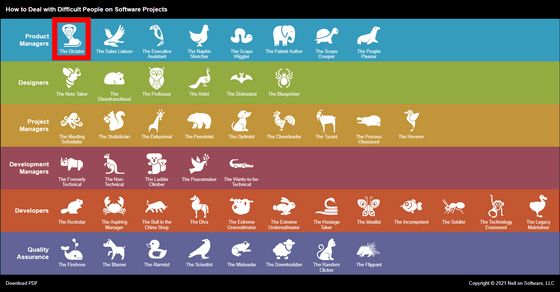
The individual page of 'Dictator' is displayed. According to Mr. Green, a 'dictator' is a 'product manager who denies ideas that he couldn't come up with,' which puts too much emphasis on a clear division of labor and hinders collaboration between job titles, especially with developers. It tends to be a problem in that it is a bad deal. If the 'dictator' doesn't understand the benefits of collaborating with a developer, talking to senior management can solve the problem relatively easily, but often has trauma in negotiating with the developer. Therefore, it seems that discussions with the representatives of the developers are also effective.

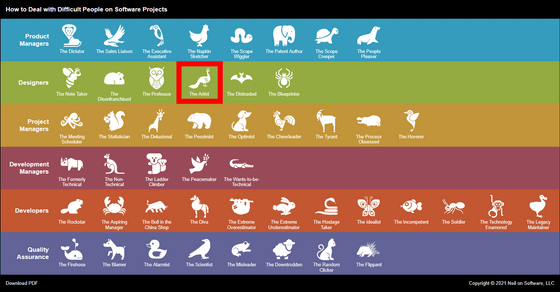
Since the 'artist' emphasizes the format rather than the practicality, the

Among the problematic project managers, Mr. Green positions 'Tyrant ' as one of the categories that can have a particularly big impact on the project.
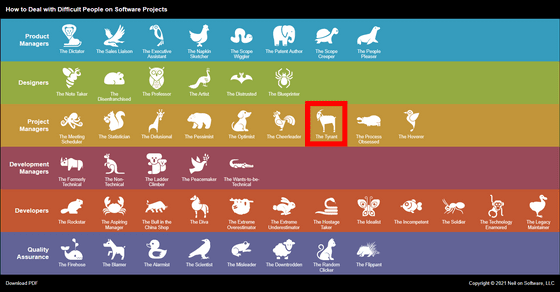
A 'tyrant' is a 'project manager who treats members as if they were motivated'. Software development projects often have members with strong personalities, so sometimes it is necessary for the project manager to exercise power, but since 'tyrants' abuse that power and lead to the outflow of talented people, The risk to the project is high. In order to fix the 'tyrant' problem, it is necessary to provide quantitative data such as 'the number of excellent employees who quit', 'failure rate of recruitment', 'number of bugs', and 'number of cases that did not meet the deadline'. Green points out.
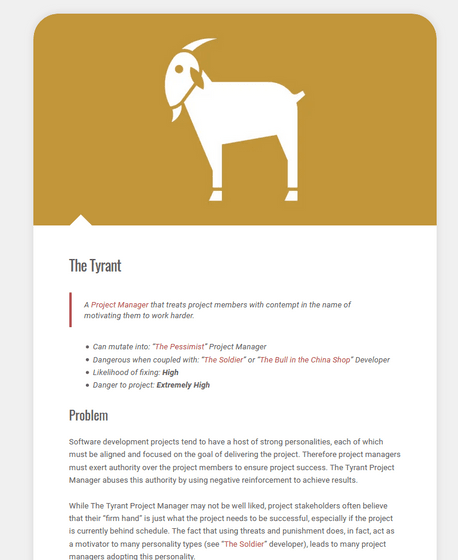
The most dangerous development manager is the '
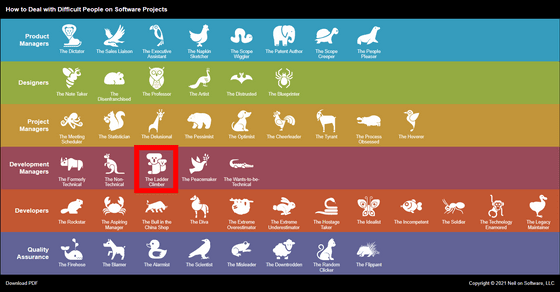
According to Mr. Green, 'ladder climbers' are only interested in promotions and salary increases, so they are not interested in the success of the project and even hate the company they are in. As a result, they sell their dwarfs to those who can decide to promote themselves, and their attitudes and remarks change depending on the person. Mr. Green commented only one word 'Fire them.' As a solution to 'ladder climber'.
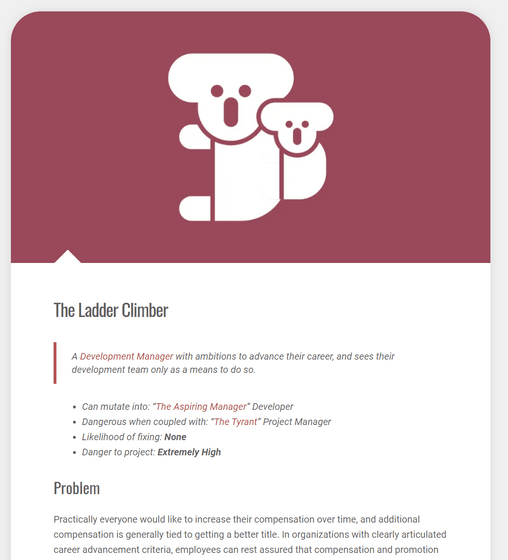
One of the most dangerous categories of developers is '

'Incompetence' is characterized by a lack of ability and skills to write software due to lack of training provided by the company and too complex tools and techniques used by the company. 'If a job turns out to be too difficult, it's normal to invest in training, but the important thing is,'if they have the power to learn, they're already learning,'' Green said. I made a retirement recommendation or concluded that if I still did not retire, I would have to dismiss.
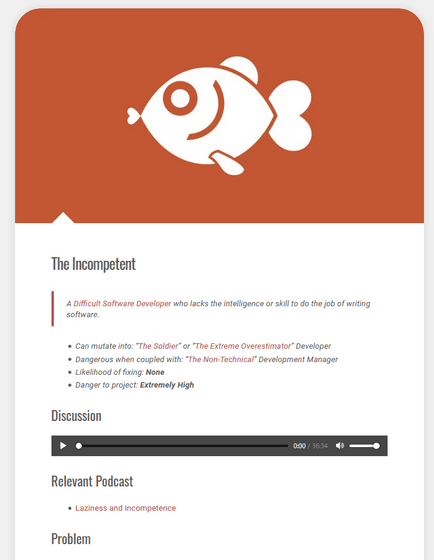
Among the QA's that test products to see features and find bugs, there are '
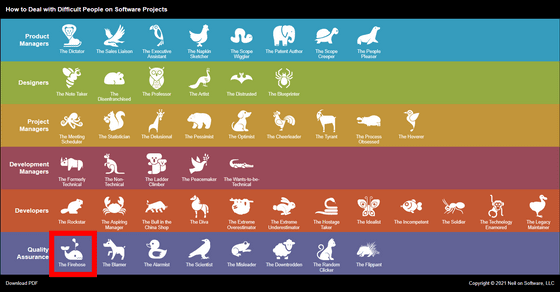
People with 'fire hose' do not investigate bugs in detail, so they can quickly find innumerable bugs, but if you look closely at the report contents, it is often the case that the same bugs appear in different forms. As a countermeasure against 'fire hose', Mr. Green said, 'The important thing is not to find many bugs, but to improve the quality of the system, so the developer of' fire hose 'discovers system problems. You will be the one who helps you. '

Related Posts:
in Software, Posted by log1l_ks







